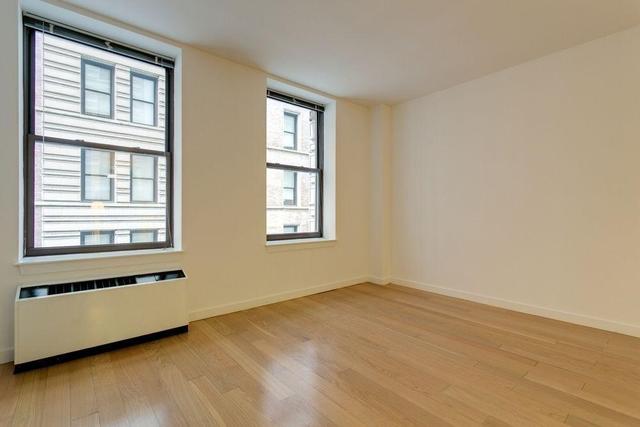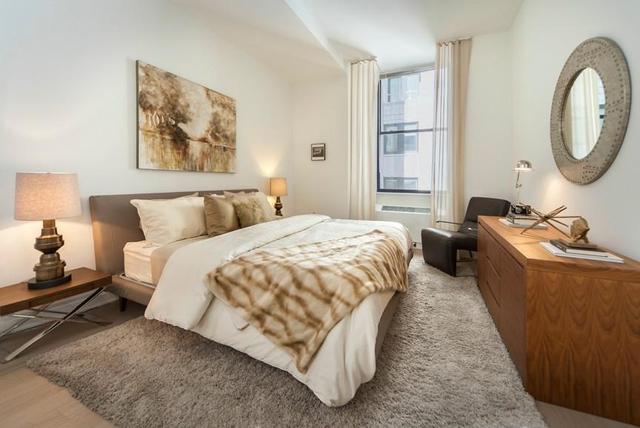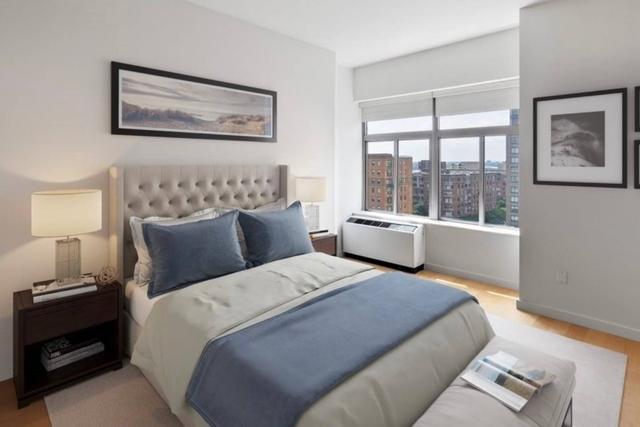
How to Cover Popcorn Ceiling without Removing It?
By: ROS Team
A popcorn ceiling, also known as a stippled or acoustic ceiling, was once popular in home construction for its noise-reducing properties and easy application. However, over time, the aesthetic appeal of popcorn ceilings has diminished.
Many homeowners now prefer a smoother and more modern look. Removing a popcorn ceiling can be messy, time-consuming, and potentially hazardous. It involves scraping off the texture and handling potential asbestos-containing materials in older homes.
Fortunately, there exists an alternative solution that enables homeowners to revamp their popcorn ceilings without undergoing the arduous process of removal.
By opting to cover up the textured surface, individuals can effortlessly achieve a fresh and updated appearance for their homes.
In this guide, we will delve into various effective methods of covering popcorn ceilings. Soothingly and conveniently transform your living space without the hassles associated with removal.
How To Cover Popcorn Ceiling?
Method 01: Covering Popcorn Ceilings with Paint
Painting over a popcorn ceiling offers an easy and affordable way to enhance its appearance. By utilizing the appropriate tools and techniques, you can achieve a sleek and updated look that perfectly complements your home’s decor.
Here’s a step-by-step guide to help you successfully paint over your popcorn ceiling:
1. Gather the Necessary Supplies:
- Drop clothes or plastic sheets to protect your furniture and floor.
- Painter’s tape to cover the edges of walls and trim.
- A sturdy ladder or scaffolding for safe access to the ceiling.
- Paint roller with an extension pole for easy application.
- A paintbrush for cutting in around edges and corners.
- Ceiling paint (latex or water-based) in your desired color and finish.
2. Prepare the Room:
- Remove all furniture or cover it with drop cloths to protect it from paint splatters.
- Use painter’s tape to cover the edges of walls, crown molding, and other trim to avoid accidentally painting them.
3. Clean the Popcorn Ceiling:
- Before painting, ensure the popcorn ceiling is free from dust, dirt, and any stains. You can use a vacuum cleaner with a brush attachment or a duster to clean the surface gently.
4. Test for Adhesion:
- Popcorn ceilings can be challenging to paint due to their texture. Before proceeding, do a small test patch to check if the paint adheres properly. If it doesn’t, consider applying a thin layer of primer before painting.
5. Cut In Around Edges:
- Use a paintbrush to carefully cut in around the edges of the ceiling, where the roller can’t reach. This will provide a neat and clean finish.
6. Paint the Ceiling:
- Start painting the popcorn ceiling using a roller with an extension pole. Work in small sections, using smooth and even strokes.
- Apply the paint in multiple thin coats rather than a single thick coat to prevent drips and achieve better coverage.
- Allow each coat to dry completely before applying the next one. Follow the manufacturer’s instructions for drying times.
7. Check for Coverage:
- After the final coat, check for even coverage. If necessary, touch up any missed spots or uneven areas.
8. Clean Up:
- Remove the painter’s tape carefully while the paint is still slightly wet to avoid peeling. Dispose of the drop cloths and clean your painting tools according to the paint manufacturer’s guidelines.
9. Enjoy Your Updated Ceiling:
- Once the paint is fully dry, step back and admire your newly transformed popcorn ceiling. It should now boast a modern look that blends seamlessly with your room’s decor.
Method 02: Covering Popcorn Ceilings with Paneling
If you are looking for a more sophisticated and substantial solution to hide your popcorn ceiling, consider covering it with paneling. This option effectively conceals the texture and adds an elegant touch to your living spaces.
Follow these steps to successfully cover your popcorn ceiling with paneling:
1. Choose the Right Paneling:
- Explore various paneling options in different styles and finishes, such as wood, MDF, or PVC.
- Consider the dimensions and layout of your ceiling to determine the amount of paneling needed.
2. Measure and Cut the Paneling:
- Measure the dimensions of your ceiling accurately.
- Cut the paneling sheets to the appropriate size to fit the ceiling’s width using a circular or table saw.
3. Prepare the Popcorn Ceiling:
- Ensure the popcorn ceiling is clean and free from dust, dirt, and loose texture.
- Repair any imperfections or damages on the ceiling surface before installing the paneling.
4. Gather the Necessary Tools and Supplies:
- Drop clothes or plastic sheets to protect your furniture and floor.
- Construction adhesive is suitable for attaching the paneling to the ceiling.
- A caulking gun to apply the adhesive.
- Nails and a nail gun for additional support (optional).
- A level and measuring tape for accurate installation.
5. Install the Paneling:
- Lay down drop cloths to catch any falling debris during installation.
- Apply construction adhesive evenly on the back of the paneling.
- Carefully lift the paneling and press it firmly onto the popcorn ceiling, aligning it with the edges and using the level to ensure it’s straight.
- If desired, use a nail gun to secure the paneling in place, but be cautious not to damage the ceiling.
6. Continue with the Next Panels:
- Repeat the process with the remaining panels, making sure they fit snugly together without any visible gaps.
7. Hide Seams and Edges:
- To hide any visible seams between panels, apply wood putty or caulk along the joints and corners, creating a seamless appearance.
- If using wood paneling, you can add trim pieces along the edges to create a finished look.
8. Paint or Stain (Optional):
- Depending on your paneling material, you can choose to paint or stain it to match your decor.
- Allow the paint or stain to dry completely before moving furniture back into the room.
9. Final Touches:
- Once the paneling is installed and finished, step back and admire your updated ceiling.
- Consider adding crown molding or decorative elements to further enhance the overall appearance.
Method 03: Covering Popcorn Ceilings with Skim Coating
Skim coating is a highly effective technique for achieving a smooth, flat surface on your popcorn ceiling. This method eliminates the need for extensive removal or covering with paneling. It involves applying a thin layer of joint compound or plaster over the textured surface, resulting in a seamless and modern finish.
Here’s a step-by-step guide to skim-coat your popcorn ceiling:
1. Gather the Necessary Supplies:
- Drop clothes or plastic sheets to protect your furniture and floor.
- Painter’s tape to cover the edges of walls and trim.
- A sturdy ladder or scaffolding for safe access to the ceiling.
- A wide putty knife or trowel (12 to 18 inches) for applying the skim coat.
- Joint compound or plaster suitable for skim coating.
- A mixing container and drill with a mixing attachment.
- Sandpaper for sanding the surface after each coat.
2. Prepare the Room:
- Remove or cover all furniture with drop cloths to protect it from falling debris.
- Use painter’s tape to cover the edges of walls, crown molding, and other trim to avoid accidentally coating them.
3. Clean the Popcorn Ceiling:
- Before skim coating, ensure the popcorn ceiling is free from dust, dirt, and any stains. You can use a vacuum cleaner with a brush attachment or a duster to clean the surface gently.
4. Mix the Skim Coat:
- Follow the manufacturer’s instructions to mix the joint compound or plaster in the mixing container until it reaches a smooth consistency.
5. Apply the First Skim Coat:
- Dip the putty knife or trowel into the mixture and apply a thin layer of the skim coat to the popcorn ceiling.
- Work in small sections to ensure even coverage and a consistent thickness across the entire ceiling.
- Use long, smooth strokes to spread the skim coat evenly, feathering the edges to blend with the existing texture.
6. Let it Dry and Sand:
- Allow the first coat to dry according to the manufacturer’s recommendations. Typically, it takes a few hours to overnight.
- Once dry, gently sand the surface with fine-grit sandpaper to create a smooth finish. Wipe away any dust before applying subsequent coats.
7. Apply Additional Coats:
- Depending on the popcorn texture’s thickness, you may need to apply two or more skim coats to achieve a seamless surface.
- Repeat the application and drying process for each additional coat.
8. Final Sanding and Finish:
- After the final coat is dry, carefully sand the entire ceiling again to ensure a smooth surface.
- Wipe away any dust and admire your beautifully skim-coated ceiling.
Method 04: Adding Decorative Elements
Adding decorative elements to your covered popcorn ceiling can elevate its visual appeal and personalize the space. Whether you prefer a subtle touch or a bold statement, there are various options to consider.
Here are some decorative elements you can incorporate:
1. Crown Molding:
- Crown molding can add a touch of elegance and sophistication to any room. Install it along the edges of the ceiling where it meets the walls to create a seamless transition between the two surfaces.
2. Trim and Friezes:
- Use decorative trim or friezes to add intricate patterns or designs to the perimeter of the ceiling or around light fixtures. These elements can bring a sense of depth and character to the covered ceiling.
3. Medallions:
- Ceiling medallions can be placed around light fixtures or ceiling fans to create a focal point and draw attention to the center of the room. They come in various styles, from classic to contemporary, and can complement different interior themes.
4. Stenciling or Faux Finishes:
- Get creative with stencils and faux finishes to add patterns, textures, or designs to the covered ceiling. You can use different colors and techniques to create a unique look that suits your taste.
5. Beams or Coffered Ceilings:
- If you prefer a more rustic or traditional look, consider adding faux wooden beams or creating a coffered ceiling effect. These elements can add depth and visual interest to the ceiling.
6. Pendant Lights or Chandeliers:
- Choose eye-catching pendant lights or chandeliers to hang from the covered ceiling. These fixtures provide functional lighting and serve as decorative pieces that enhance the overall ambiance.
7. Recessed Lighting:
- Recessed lights can be installed flush with the covered ceiling, creating a clean and modern look. They offer a subtle way to add illumination without drawing attention away from other decorative elements.
8. Murals or Artwork:
- For a truly unique and artistic touch, consider painting a mural on the covered ceiling or hanging artwork that complements the room’s decor. This creative approach can add a personal and distinctive touch to the space.
9. Glow-in-the-Dark Stars or Fiber Optic Lights:
- Add glow-in-the-dark stars or install fiber optic lights on the covered ceiling for a fun and whimsical touch. These elements can create a magical and enchanting atmosphere, especially in bedrooms or playrooms.
Method 05: Cover With Drywall
Covering a popcorn ceiling with drywall is a more extensive but highly effective method to achieve a completely smooth and modern finish. This process involves installing new drywall sheets over the existing popcorn texture.
Here’s a step-by-step guide to covering your popcorn ceiling with drywall:
1. Measure and Plan:
- Measure the dimensions of your ceiling accurately to determine the amount of drywall needed.
- Plan the layout, taking into consideration the direction of the ceiling joists and ensuring the drywall seams fall on the joists for better support.
2. Gather the Necessary Supplies:
- Drywall sheets (standard size is 4 feet by 8 feet).
- Drywall screws (1 ¼ inch to 1 ½ inch in length).
- Screw gun or drill for driving in the screws.
- Drywall joint compound (mud) for finishing seams and screw holes.
- Drywall tape to reinforce the seams.
- A drywall knife or trowel for applying the joint compound.
- A drywall saw or utility knife for cutting the drywall sheets.
- Drop clothes or plastic sheets to protect your furniture and floor.
- A sturdy ladder or scaffolding for safe access to the ceiling.
3. Prepare the Room:
- Remove or cover all furniture with drop cloths to protect from falling debris.
- Use painter’s tape to cover the edges of walls, crown molding, and other trim to avoid damaging them during the installation.
4. Remove the Popcorn Texture (Optional):
- If you prefer, you can scrape off the popcorn texture before installing the drywall. However, this step is time-consuming and can create a mess.
5. Install the Drywall:
- Start at one corner of the room and position the first drywall sheet on the ceiling, perpendicular to the joists.
- Use a screw gun or drill to drive drywall screws through the drywall and into the ceiling joists, spacing the screws every 6 to 8 inches along the joists.
- Continue installing drywall sheets and stagger the seams for added strength and stability.
6. Tape and Mud the Seams:
- Apply drywall tape over the seams, pressing it firmly into the joint compound.
- Use a drywall knife or trowel to apply a thin layer of joint compound over the tape, feathering the edges for a smooth transition.
- Let the joint compound dry completely before proceeding to the next step.
7. Apply Additional Coats:
- Repeat the taping and mudding process for two or three additional coats, allowing each coat to dry before applying the next one.
- Sand the dried joint compound between coats to achieve a smooth finish.
8. Finish and Paint:
- Once the final coat is dry and sanded, the ceiling should be smooth and ready for painting.
- Prime the drywall before applying your chosen paint color and finish.
How Much Does It Cost To Remove Popcorn Ceiling?
The cost of removing a popcorn ceiling depends on a number of factors, including the size of the area to be removed, the condition of the ceiling, and whether or not it contains asbestos. In general, you can expect to pay anywhere from $900 to $2,800 for professional popcorn ceiling removal.
Here are some of the factors that will affect the cost of popcorn ceiling removal:
- Size of the Area to be Removed: The larger the area, the more expensive the removal will be.
- Condition of the Ceiling: If the ceiling is in good condition, the removal will be easier and less expensive. If the ceiling is damaged or has been painted over, the removal will be more difficult and expensive.
- Asbestos: If the ceiling contains asbestos, the removal will be more expensive because it requires special handling and disposal procedures.
What Is The Cheapest Way To Cover Popcorn Ceilings?
The cheapest way to cover popcorn ceilings is to skim-coat them. This involves applying a thin layer of joint compound over the popcorn ceiling to smooth it out. It is a relatively easy DIY project that can be done with basic tools.
Is It Cheaper To Remove Popcorn Ceiling Or Cover It Up?
In general, it is cheaper to cover a popcorn ceiling than to remove it. In general, you can expect to pay anywhere from $900 to $2,800 for professional popcorn ceiling removal.
The cost of covering a popcorn ceiling is much lower. There are a number of different ways to cover a popcorn ceiling, and the cost will vary depending on the method you choose. However, you can expect to pay anywhere from $200 to $600 for most covering methods.
How to Cover Popcorn Ceiling without Removing It: Bottom Line
In conclusion, covering a popcorn ceiling without removing it offers a practical and creative solution to update and enhance the aesthetics of your living spaces. Whether you choose to paint over the texture, install paneling, skim coat, or use drywall, each method comes with its own benefits and considerations.
Read Also: How to Remove Popcorn Ceiling Without Making a Mess








